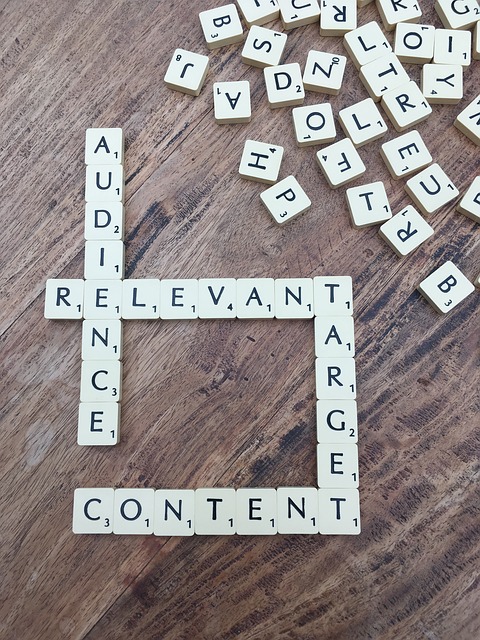
How to Define and Write for Your Book’s Target Audience
HOW TO DEFINE AND WRITE FOR YOUR BOOK’S TARGET AUDIENCE
You have a great idea for a book, and you’re ready to begin writing. But before you do, consider this great piece of advice from Stephen Covey’s classic book, “The 7 Habits of Highly Effective People:”
Begin with the end in mind.
It’s a sound strategy, and it’s especially true in the highly competitive publishing market. To publish and market your book successfully, you need to have a clear understanding of your audience before you ever start writing.
Understanding your audience is critical for two main reasons. First, it will ensure there’s a substantial enough market for your book to be profitable. Second, it will determine the appropriate writing tone to use in your book.
With your audience clearly in mind, you can write your book in a way that will resonate with and engage those readers.
Target audience and tone are two critical pieces of your publication strategy. Having a clear audience profile will greatly improve your chances of finding a good agent or editor to work with, help them make the most compelling case for publication, and help position your book for optimal marketing success.
By becoming an expert on your audience, what they want to read and why, and the kind of writing that will engage them, you’ll go a long way to ensuring your book’s success.
So, before you begin writing, there’s some important groundwork to do.
Let’s take a look at the importance of clearly defining your target audience and doing the critical research and analysis upfront to give your book the greatest chance of success. Following are some strategies for successfully navigating these crucial steps in the book writing process.
Defining Your Target Audience
Know your why.
According to Flori Meeks Hatchett of The Writers for Hire, the first step in determining the right audience for your book is to ask yourself why you’re writing it.
Hatchett, who has ghostwritten and edited dozens of nonfiction books, says being clear on your reason for writing the book goes hand in hand with figuring out your goal for the project.
That, in turn, will help you identify your target reader.
“Answering this question will naturally define who your audience would be,” Hatchett says.
“If you’re committing to the time and work involved in writing a book, you probably have a reason. Maybe you’re offering business advice based on your experience. Or, if you want to write your life story, why do you want to write it? What do you want your reader to get out of it? Who do you envision reading it?”

What’s your message?
Think about your message and whom you want to reach with that message. What problem are you solving for the reader? How is your approach to solving their problem unique? Why will they want to read your book? Be specific. Think about your most important readers—those who will have a strong interest in your book, and whom you must reach to make your book successful.
Establish your reader profile.
Here are some criteria and guidelines for establishing your reader profile:
- Demographics. What is their gender? What’s their education level? What’s their age, income, and profession? Where do they live?
- Psychographics. What are their values, attitudes, interests, and opinions? What’s the issue your book will help them solve? Maybe your audience is mid-life women looking for financial guidance, for example, or young professionals navigating workplace politics. What kinds of media and books do they consume? Where do they look for the solutions or inspiration they want? Whom do they trust to provide that information? Understanding their mindset and priorities will help you write a book that matters to them.
- Online behavior. Which social media platforms are they on? Are they active in Facebook groups or communities? What kinds of topics and issues are they focused on in these forums?
- Google. A Google keyword search with your key audience descriptors will help you identify the terms and topics your readers are searching for online. You can also do a Google news search with those same terms to pull up current news items and identify audience trends.
- Your existing audience. Your existing audience can give you great insight into the interests and concerns of your potential reader. If you have a website and social media presence, depending on the size of your community, you may be able to use Facebook Audience Insights or Twitter Advanced Search to identify trending hashtags or keywords among your followers. You might also consider posting a simple online survey to gauge your audience’s interest in your topic.
- A competitive analysis. Do a competitive analysis by searching top-selling similar titles on Amazon. Read the descriptions and the book jackets to learn how these titles are positioned. Read the reviews to get a sense of how readers have responded. How will your book be distinct from existing titles?
- The competition. Visit competitive author websites and social media platforms to see how those writers are positioning themselves and their books in the market, and how they’re communicating with their readers.
- Professional/industry organizations. If your topic is business-oriented, look at websites of professional/industry organizations in your industry to identify industry and audience trends.
Whether it’s a how-to for entrepreneurs, personal essays on parenthood, or a guide to the homebuying process for first-time Millennial homeowners, be clear on why your audience is reading your book and what you want them to take away from it.
A note about autobiography and memoir. Identifying the audience for this genre is less about a specific demographic or psychographic profile and more about a relatable theme. Successful autobiographies and memoirs are defined more by an unusual story or a compelling premise that resonates with readers. You can learn more about the nuances of autobiography and memoir here.
Determine your secondary markets.
While it’s critical to be as specific as possible about your target audience, keep in mind that an audience that’s too small or niche won’t be sufficiently profitable for publishers. Publishing experts recommend identifying at least two secondary markets for your book—readers who aren’t your primary target but who would still have an interest in the book.
To use a classic example, Dale Carnegie’s “How to Win Friends and Influence People” is a bestselling business and personal development book that has sold millions of copies worldwide. The primary audience might be ambitious professionals who want to build their influence in the workplace. A secondary audience might be people who want to improve their relationships and be more confident in social situations. A third audience might be students studying psychology and behavior.
Create a reader persona.
A recommended practice is to write out your reader persona—a detailed description of your ideal reader—and include it with your book proposal, along with a description of your book’s value proposition for that reader. These will help you make the strongest possible case for your book to agents and editors and will serve as a valuable marketing tool once the book is published.
The time you invest in audience research and analysis is time well spent. With a detailed picture of your target reader, you can sharpen your focus to ensure your book has a clear message and a differentiated approach for a specific audience.
Writing for Your Audience: Finding the Right Tone for Your Book

Now you have a clear picture of whom you’re writing for. So, how do you write in a way that will engage those readers?
You may have perfectly curated your audience and clearly defined your book’s value proposition, but if your writing doesn’t resonate with readers, you’ve missed your golden opportunity.
What is tone?
Defined simply, tone is the attitude the writer has toward their topic and reader. The tone of your book will determine the quality of your connection with your audience.
Is it casual and friendly? Expert and authoritative? Intimate and conversational?
Understanding your readers and their expectations will help you determine the appropriate tone for your book. What do they want to get from reading your book? Is it guidance on a specific issue? Knowledge to build their expertise? Inspiration? Entertainment?
Your writing tone should be appropriate for your topic, your relationship to your topic, and your readers’ expectations. If you’re writing about an industry-specific topic—the oil industry, for example—you’ll want your tone to convey your expertise and authority. If you’re writing a how-to book, your tone will be more straightforward and practical. An autobiography or memoir usually has a more personal, intimate tone.
Think about your conversational style. How would you talk to your reader if you were discussing your topic in person?
Examples of Writing Tone
Some examples of writing tone include:
- Serious, thoughtful
- Lighthearted, humorous
- Formal, academic
- Informal
- Encouraging, inspirational
- Opinionated
This article has a great list of words that describe various writing tones.
Tips for Determining Writing Tone
Study your competitors. Look at comparable titles by other authors in your category to see how they write and engage with their readers. This will give you an understanding of what works well in your niche and a point of reference to inform your own writing.
If you have an established media presence with a website and social sites, you’re already a step ahead. You’ve established a tone on those platforms that you can now expand into your book, making it a seamless extension of your existing voice and marketing.
Be authentic. Your writing should sound like you. It should be appropriate for your subject and your readers. Maintain your tone consistently throughout the book.
Consider professional writing help.
For more help with developing your message and refining it for your audience, you may want to consider hiring a professional ghostwriter or editor.
A writing consultant can provide invaluable expertise and be a trusted partner in the often lengthy and complex process of writing a book.
Let the writing begin!
With your target audience clearly established, you can start writing with confidence. The understanding you’ve developed of your readers and how to write for them effectively will guide you throughout the writing process. By beginning with the end in mind and doing your audience research upfront, you’ve set yourself up for success.
Related Content
- 0 Comment
Subscribe to Newsletter
- Elevate Your Content: How To Use Canva for Eye-Catching Visuals
- These Tools Are Your Key to the Content Campaign Kingdom
- Strategic Content Marketing: Distribution Methods for Maximum Reach
- The Abilities and Limitations of AI in Content Creation
- How to Use AI to Power Up Your Marketing Communication Strategy




